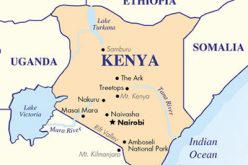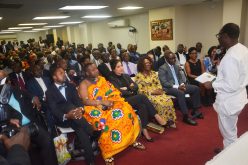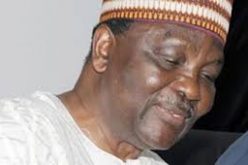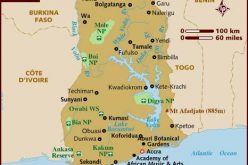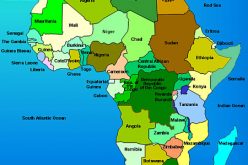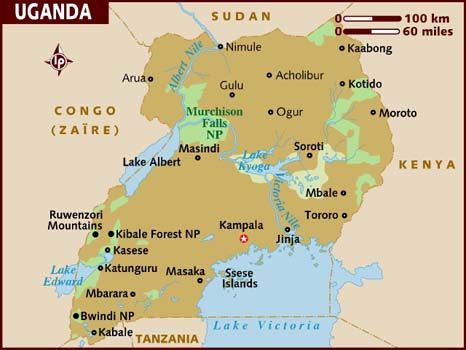 By Prisca Baike (The Observer, Kampala) It is martyrs day – a day named in recognition of the deaths by burning, of several youths, who insisted on practising their faith.
By Prisca Baike (The Observer, Kampala) It is martyrs day – a day named in recognition of the deaths by burning, of several youths, who insisted on practising their faith.
Most of the youths were set on fire at Namugongo, hence the huge hut-like structure with its outstanding copper pillars at the Catholic shrine.
The tall green trees around this shrine give off a soothing breeze. Far beyond the green of the trees, is a sizeable manmade lake with a conspicuous pavilion. Prisca Baike spoke to Fr John Mukasa Muwonge, a promoter of the Uganda martyrs, for some of the mysteries of the youths, including how they booked their place in history despite upsetting Kabaka Daniel Mwanga II of Buganda.
Prior to the June 3, 1886 mass execution of the martyrs at the Namugongo Anglican shrine, there had been several other executions in this place. The most prominent execution was the 1862 burning of 22 Muslims, who were killed for getting circumcised ahead of the Kabaka, contrary to a decree at the time.
He says Buganda kingdom had 13 execution sites and the official execution site was in Namugongo, where the Anglican shrine stands. At this place, the only mode of execution was by burning the culprits while they were alive, unlike other execution sites where other methods like hanging and stabbing were used. Usually boys and men who refused to join the Kabaka on hunting expeditions to other kingdoms, as well as chiefs and princes the Kabaka distrusted, were executed here.
Mass killing:
The first Christians executed were Noah Sserwanga, Joseph Lugalama and Mark Kakumba, all Anglicans. The trio was executed on January 31, 1885 at Mpiimeerebera execution site in Busega where the Uganda Martyrs church stands today. Much later on November 15, 1885, Joseph Mukasa Balikuddembe became the first Catholic martyr to be executed, at Nakivubo, where the former Owino market – now named after him – stands today.
After Balikuddembe’s death, there was a lull until the executions resumed in earnest, starting May 26, 1886 when the Kabaka summoned several pages to the Munyonyo palace.
At the time, the Kabaka was residing in Munyonyo after his Mengo palace caught fire on February 22, 1886. The Kabaka was reportedly incensed that the youths had disobeyed his orders not to pray anymore.
The Kabaka’s soothsayers had warned Mwanga that the white men (missionaries) would use the youths to bring down the kingdom. So, when none of the youths would apologise for disobeying the Kabaka, an enraged Mwanga ordered their execution. Denis Ssebugwawo was beheaded at the palace and the rest were condemned to death and handed over to Mukajjanga.
As the youths were chained and marched from Munyonyo to Namugongo, they made a grim procession, singing to cheer one another. However, there were altercations between the executioners and the victims, usually the former taunting the latter to renounce their faith, ultimately resulting in deaths by stabbing. Andrea Kaggwa was killed in one such incident just after Munyonyo, and Ponsiano Ngondwe followed as the procession passed Kyamula.
The following day (May 27, 1886), Atanasius Bazzekuketta was killed at Nakivubo and later on, Gonzaga Gonza at Lubaawo Naalya, near Kyaliwajjala. Earlier that day, at Old Kampala, Matia Mulumba had his arms and legs cut off and bits of flesh cut from all over his back. All these were burnt right before him but he did not die until May 30 as his wounds were treated with herbs by his persecutors who wanted him to suffer a painful death.
Still, on May 27, a smaller group of persecutors proceeded to Mityana where they killed Noah Mawagali on May 31, 1886. He was speared, tied to a fig tree and left for dogs to feast on, before his body was thrown at a junction, to threaten other believers. The larger group – about 22 boys – arrived at Namugongo shrine on May 27, and were tied up and kept waiting, as the executioners collected the huge pile of firewood that would be used to make the huge bonfire, in which the youths were burnt on June 3, 1886.
While many more would be executed across Buganda well until 1887, including one of the Kabaka’s sisters, Clara, those burnt at Namugongo remain the face of the group, as their predicament was well documented by the French White Fathers, including Fr Simeon Lourdel (better known as Mapeera).
Charles Lwanga was killed where the Namugongo Roman Catholic basilica stands today, while the rest were killed at Nakiyanja – where the Anglican shrine stands. Unlike the rest who were executed by the head executioner Mukajjanga, Lwanga was killed by Ssenkoole, the assistant executioner, as the two had a grudge going back to 1884 when Lwanga was in charge of developing the Kabaka’s lake in Mengo.
Ssenkoole had refused to work under Lwanga’s supervision, arguing that he would not work for someone younger than him. He was fined a goat and three calabashes of local beer, a matter that he never forgot.
The Basilica:
The Namugongo church started in Kyaliwajjala where Vienna College is currently built. This is where the then Nsambya based Mill Hill missionaries used to converge every Sunday. Later the church was moved to Namugongo, where Charles Lwanga was killed and a church built there. The martyrs’ execution was the first such incident in Africa and their heroism was talked about in the Catholic Church, resulting in their canonisation in Rome in 1964.
With this, the then Archbishop Emmanuel Nsubuga, spearheaded the construction of the new basilica, in time for the Pope’s arrival in Africa in 1969. The shrine, which features 22 vertical copper pillars – one for each martyr, was completed in 1975. The man-made lake came about due to the brick making work in the 1950s during the construction of Namugongo girls’ primary school, led by Msgr Lawrence Mbwega and the Mill hill missionaries.
After extracting a lot of soil for the bricks, a huge pond was left in the swampy area. Mbwega started rearing fish in the pond and growing sugar canes and yams around it. However, the beauty of the pond attracted several pilgrims to pray from there; so, he turned it into a manmade lake around which mass could be celebrated. He also constructed a pavilion, from where he and other priests would conduct mass.



